What is a drill rig: all you need to know

A drill rig is a powerful machine that is commonly used in the construction and mining industries. It is designed to bore holes into the ground, allowing for the extraction of valuable resources or the creation of foundations for buildings and infrastructure projects. Drill rigs come in a variety of sizes and configurations, depending on the specific needs of the project.
One of the key components of a drill rig is the drill bit, which is attached to the drilling mechanism and is responsible for cutting through the material. The drill bit is often made of hardened steel or tungsten carbide to withstand the forces involved in drilling. In addition to the drill bit, drill rigs also typically include a drill string, which is a series of connected drill rods that transmit the rotation of the drilling mechanism to the bit.
There are different types of drill rigs, each suited to a specific type of drilling operation. For example, rotary drill rigs are commonly used in mineral exploration and large-scale mining operations. These rigs use a rotational motion to power the drill bit and are capable of drilling deep into the earth’s crust. On the other hand, percussion drill rigs are often used for smaller-scale projects and are better suited for drilling through harder materials such as rock and concrete.
Drill rigs are essential tools in many industries, as they allow for efficient and precise drilling operations. Whether it’s extracting oil, water, or minerals from the ground or creating a solid foundation for a building, drill rigs play a crucial role in modern construction and resource extraction. Without these machines, many of the projects and industries that we rely on would not be possible.
Definition and Purpose
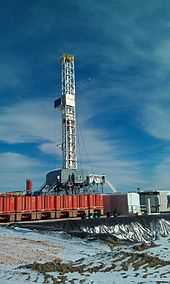
A drill rig, also known as a drilling rig or driller, is a large machine used in various industries to create holes in the ground. It is commonly used in mining, construction, oil and gas exploration, and water well drilling.
The main purpose of a drill rig is to create holes or shafts in the earth’s surface to extract valuable resources such as minerals, oil, natural gas, and water. It is an essential tool in the exploration and extraction of these resources.
The drill rig is equipped with a rotating drill bit that is capable of breaking through different types of rock formations, soil, and other materials. It can reach depths ranging from a few meters to several kilometers, depending on the specific application.
In addition to drilling holes, drill rigs are also used for various other purposes such as soil sampling, geotechnical testing, and environmental monitoring. They can be mounted on tracks or wheels for mobility and are typically powered by diesel engines or electricity.
The size and configuration of a drill rig can vary depending on the specific needs of the project. Some drill rigs are small and portable, while others are large and complex, capable of drilling deep and wide boreholes.
Overall, drill rigs play a crucial role in many industries by providing the means to access and extract valuable resources from the earth’s subsurface.
Types of Drill Rigs
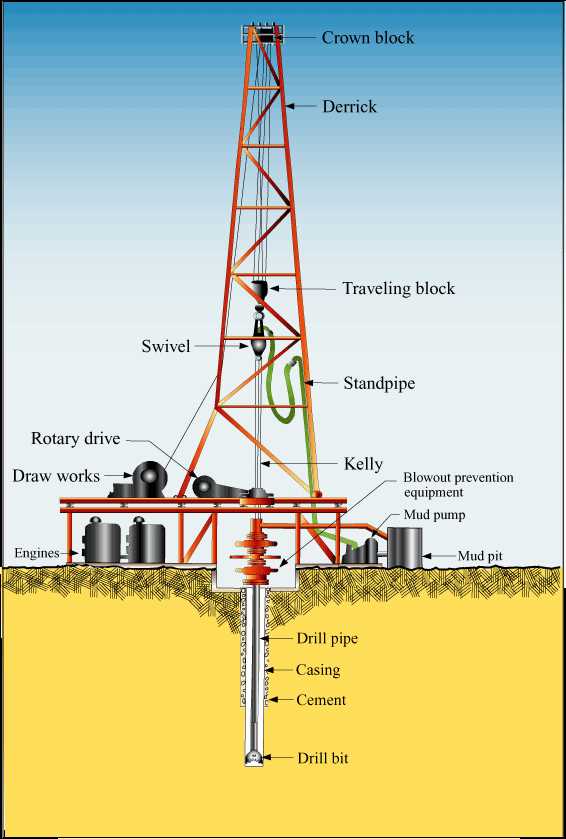
1. Percussion Drilling Rigs
These types of drill rigs use a percussive action to penetrate the earth’s surface. They have a bit with a cutting edge that rotates and strikes the ground at high speeds, breaking and crushing the rocks. These rigs are commonly used for mineral exploration, rock blasting, and soil sampling.
2. Rotary Drilling Rigs
Rotary drill rigs use a rotating drill bit to create boreholes in various types of subsurface formations. The bit can be either a roller cone type or a fixed-cutter type. Rotary drilling rigs are versatile and can be used for water well drilling, oil and gas exploration, and foundation drilling.
3. Auger Drilling Rigs
Auger drilling rigs are used to bore holes in soils, soft rocks, and sediments. They consist of a helical screw-like drill bit that is rotated into the ground to remove the material. Auger drilling is often used for soil sampling, environmental site assessment, and geotechnical investigations.
4. Diamond Drilling Rigs
Diamond drilling rigs are specially designed for drilling hard rocks and concrete. The drill bit contains industrial-grade diamonds that cut through the material with high precision. Diamond drilling rigs are commonly used in mining exploration, geological surveys, and construction projects.
5. Geothermal Drilling Rigs
Geothermal drilling rigs are used to drill deep holes for the extraction of geothermal energy. These rigs require specialized equipment and techniques to reach the hot rock formations beneath the earth’s surface. Geothermal drilling rigs are essential for harnessing renewable energy sources.
6. Directional Drilling Rigs
Directional drilling rigs are used for drilling non-vertical or horizontal boreholes. They can change the direction and angle of the drill bit to reach the desired target. Directional drilling rigs are commonly used in oil and gas exploration, underground construction, and pipeline installation.
7. Dual Rotary Drilling Rigs
Dual rotary drilling rigs use two sets of rotating drill strings to drill and case a borehole simultaneously. The inner drill string cuts and advances the hole, while the outer casing is installed to provide stability. Dual rotary drilling rigs are commonly used for water well construction, environmental drilling, and ground stabilization.
8. Cable Tool Drilling Rigs
Cable tool drilling rigs, also known as percussion rigs, use a weight, rope, and pulley system to raise and drop a heavy chisel bit into the ground. The repeated impact of the chisel bit breaks up the ground, allowing for the removal of the cuttings. Cable tool drilling rigs are commonly used for water well drilling and shallow oil and gas exploration.
9. Sonic Drilling Rigs
Sonic drilling rigs use high-frequency vibrations to penetrate the ground. The drill bit oscillates back and forth, creating a resonance that breaks up the soil and allows for easy extraction. Sonic drilling is commonly used for environmental sampling, geotechnical investigations, and mineral exploration.
10. Air Core Drilling Rigs
Air core drilling rigs use compressed air to create a high-velocity airflow that lifts and transports the cuttings to the surface. The drill bit has hollow inner tubes that allow for continuous sampling and easy removal of the material. Air core drilling is commonly used for mineral exploration and geological surveys.
11. Mud Rotary Drilling Rigs
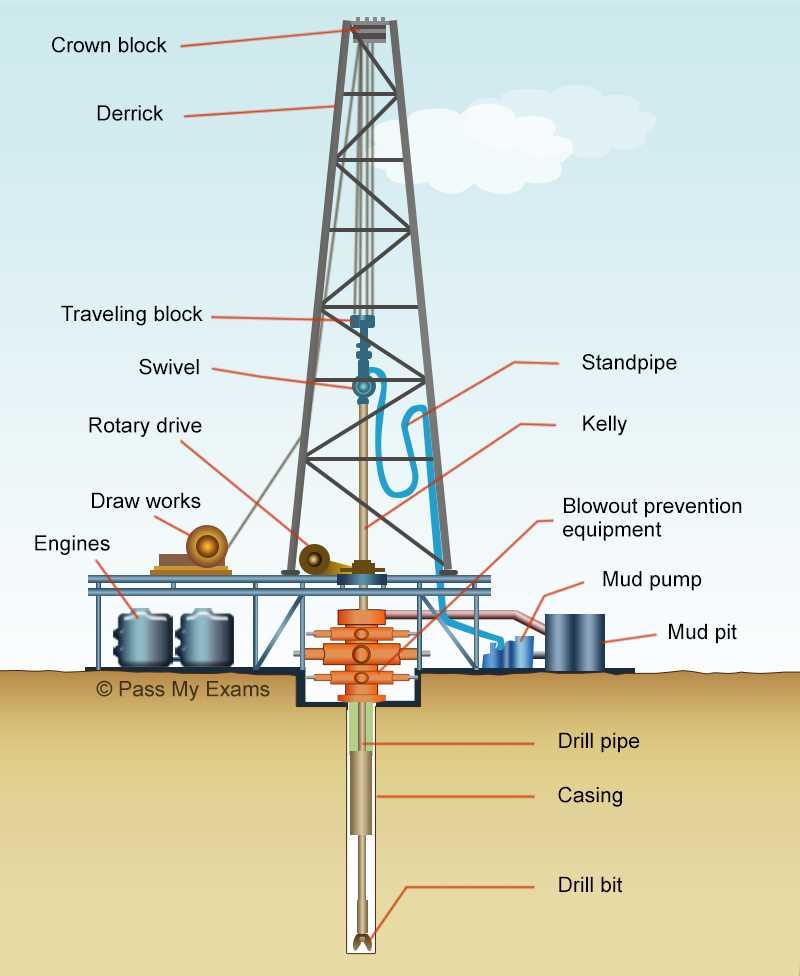
Mud rotary drilling rigs use a circulating mud system to remove the cuttings and cool the drill bit. The mud is pumped down the drill string, passing through the bit and returning to the surface, carrying the cuttings with it. Mud rotary drilling is commonly used for water well drilling, oil and gas exploration, and environmental site investigations.
Components and Working Principle
A drill rig is a complex machine that is used to bore holes in the ground for various purposes such as mining, construction, oil exploration, and environmental research. It consists of several components that work together to achieve the drilling process. The main components of a drill rig include:
- Mast and Derrick: The mast or derrick is a tall vertical structure that supports the drilling equipment and provides stability.
- Drill Bit: The drill bit is the cutting tool that is attached to the end of the drill string. It is responsible for creating the hole in the ground.
- Drill Pipe: The drill pipe is a long tubular component that connects the drill bit to the drilling rig. It serves as a conduit for the drilling fluid and provides the necessary strength and stiffness to the drill string.
- Drilling Fluid: Also known as mud, the drilling fluid is a mixture of water, chemicals, and additives. It is pumped down the drill pipe and circulated to cool the drill bit, remove cuttings, and provide hydraulic pressure for the drilling process.
- Power System: The power system of a drill rig typically consists of an engine or motor that provides the necessary power to operate the drilling equipment.
- Control System: The control system of a drill rig includes various instruments and controls that are used to monitor and regulate the drilling process. It allows the operator to adjust parameters such as drilling speed, pressure, and angle.
- Hoisting System: The hoisting system consists of a winch or hoist mechanism that is used to raise and lower the drill string and other heavy equipment.
The working principle of a drill rig involves the rotation of the drill string and the application of downward force to the drill bit. When the drill string is rotated, the drill bit cuts into the ground, creating a hole. Simultaneously, drilling fluid is pumped down the drill pipe to cool the drill bit, remove cuttings, and provide lubrication. The cuttings are then carried up to the surface using the drilling fluid, and the cycle repeats until the desired depth is reached.

The drill rig operator monitors and controls the drilling process through the control system, ensuring that the drilling is performed efficiently and safely. Various parameters such as drilling speed, pressure, and angle can be adjusted to optimize the drilling operation for different geological formations and objectives.
Overall, the components and working principle of a drill rig enable it to perform the essential task of drilling holes in the ground for various industries and applications.
Applications and Industries
A drill rig is a versatile piece of equipment that is used in a wide range of applications and industries. From mining to construction to oil and gas, drill rigs play a crucial role in various sectors.
Mining
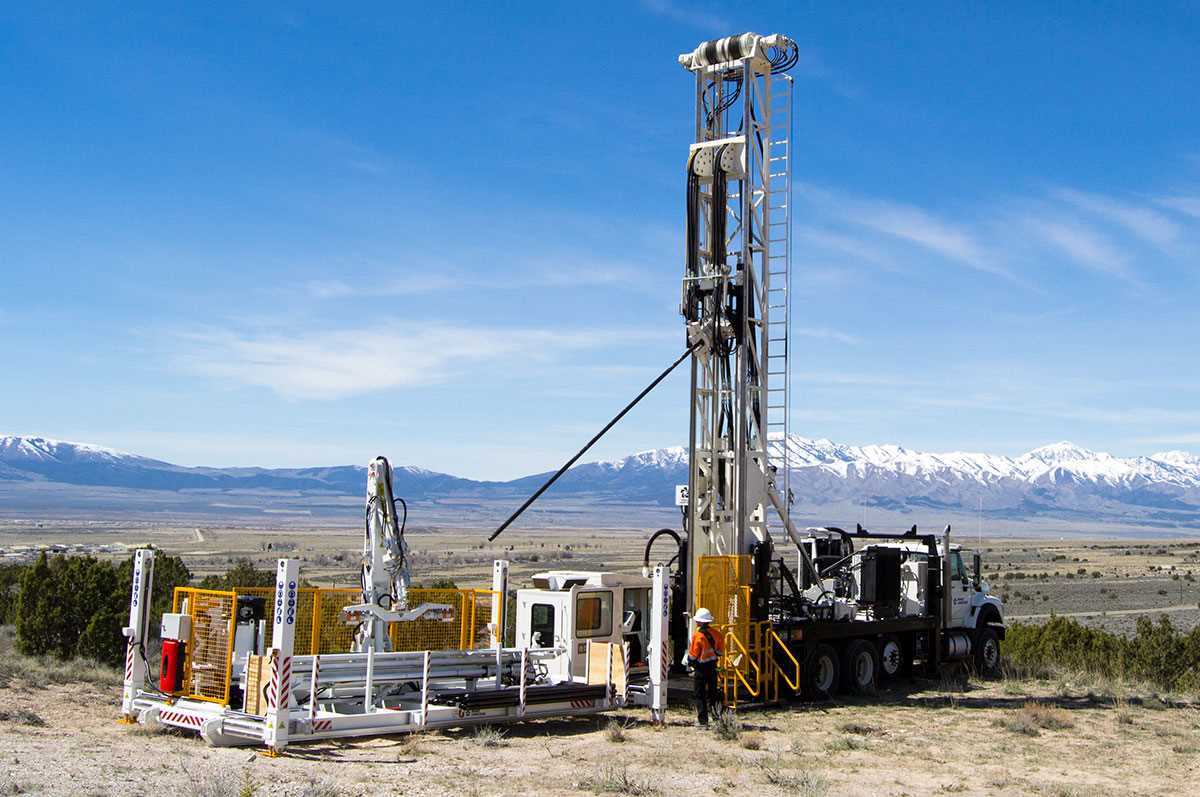
Drill rigs are commonly used in mining operations to extract minerals and ores from the earth. They are used to drill holes into the ground or into rock formations to access valuable resources. Mining drill rigs are designed to handle tough conditions and are equipped with powerful drilling capabilities.
Construction
In the construction industry, drill rigs are used for various purposes. They are used to drill holes for foundations, piling, and geotechnical investigations. Drill rigs can also be used for tunneling, anchoring, and soil stabilization. They are essential for building structures and ensuring their stability.
Oil and Gas
Drill rigs are crucial in the oil and gas industry for exploration and extraction purposes. Offshore drill rigs are used to drill wells under the seabed to extract oil and gas reserves. Onshore drill rigs are used to drill exploratory wells and production wells. The drilling process is complex and involves advanced technology and equipment.
Geothermal Energy
Drill rigs are used in the geothermal energy industry to drill deep wells for harnessing geothermal power. Geothermal energy is a renewable energy source that utilizes heat from the earth’s core. Drill rigs are used to create boreholes for extracting hot water or steam for electricity generation or heating.
Environmental and Geotechnical Studies
Drill rigs are also used for environmental and geotechnical studies. They are used to collect soil and rock samples for analysis, which helps in understanding the properties of the ground. This information is essential for engineering projects, environmental assessments, and site investigations.
Other Industries
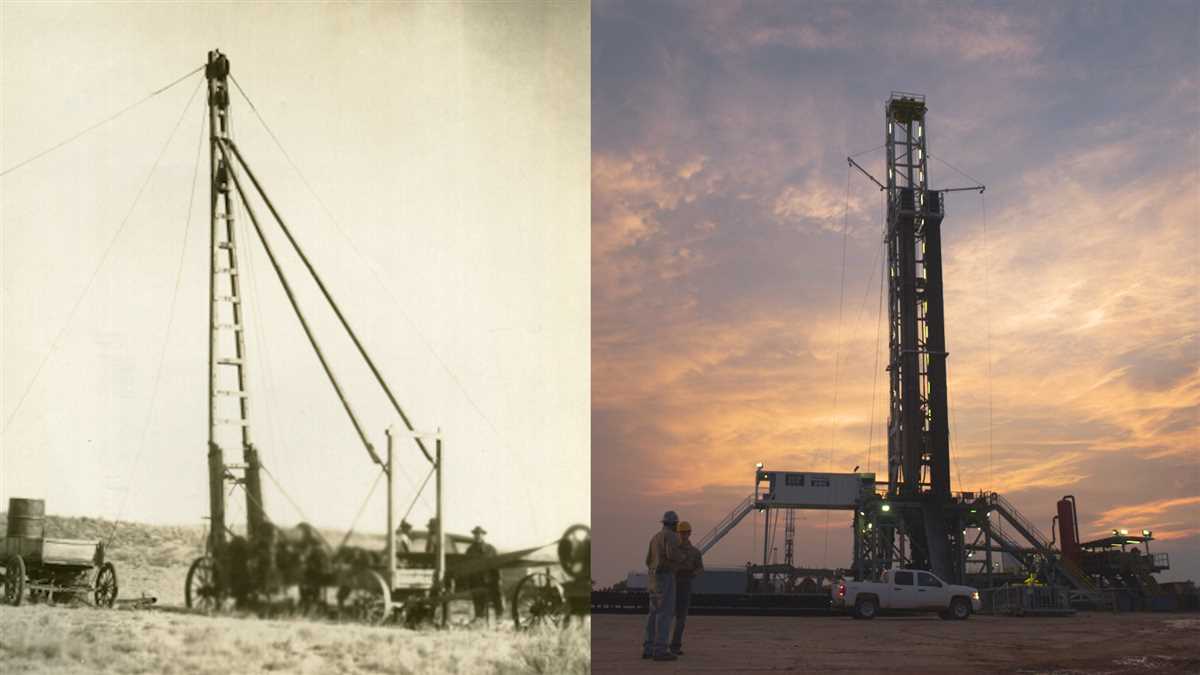
Drill rigs find applications in various other industries, including water well drilling, geophysical exploration, scientific research, and even in the military for constructing infrastructure in remote locations.
In summary, drill rigs are used in a wide range of applications and industries, including mining, construction, oil and gas, geothermal energy, environmental studies, and more. They are versatile machines that play a crucial role in various sectors.
Advantages and Benefits
1. Increased Efficiency
A drill rig offers increased efficiency in several ways. Firstly, it significantly speeds up the drilling process compared to manual methods. This allows for more holes to be drilled in a shorter amount of time, increasing productivity on a worksite. Additionally, drill rigs are equipped with advanced technologies and features that help optimize drilling operations, such as automated drilling systems and real-time data monitoring. These advancements further improve efficiency and accuracy.
2. Enhanced Safety
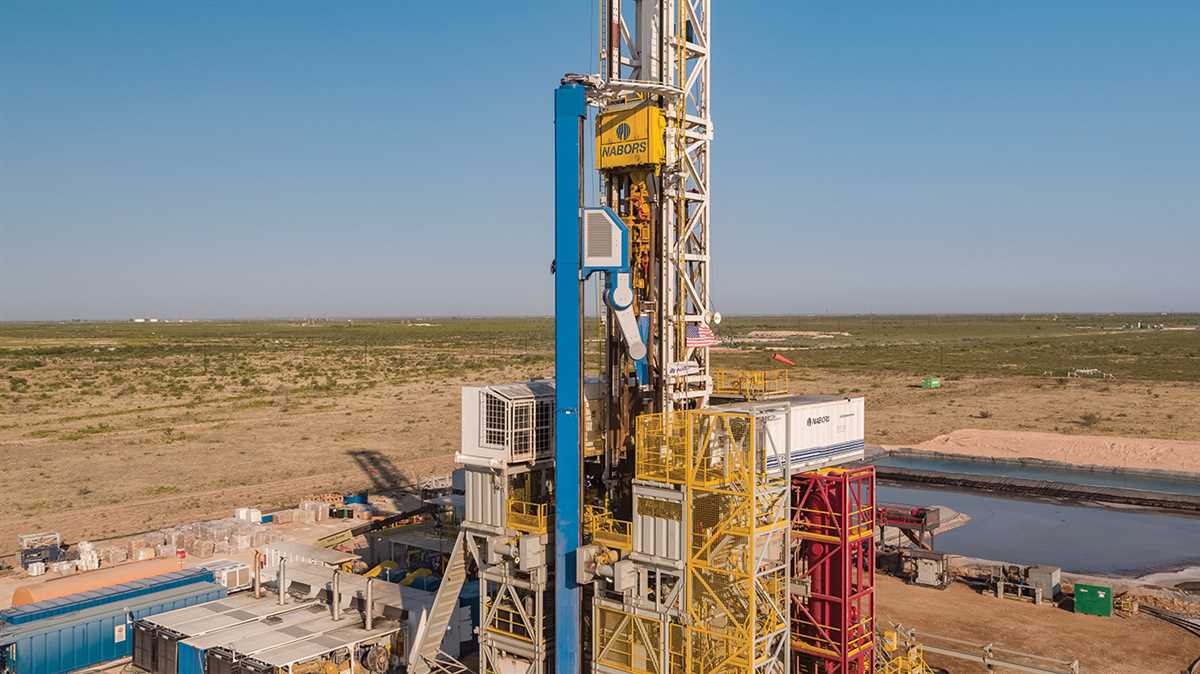
Using a drill rig comes with various safety benefits. One of the biggest advantages is that it eliminates the need for manual drilling, which can be a dangerous task. By automating the drilling process, workers can avoid the risks associated with hand-operated drills, such as hand injuries or strain. Moreover, many drill rigs are equipped with safety features such as emergency stop buttons and remote control capabilities, allowing operators to maintain a safe distance from the drilling operation.
3. Versatility
Drill rigs are incredibly versatile and can be used in various drilling applications. Whether it’s for mineral exploration, water well drilling, or geotechnical investigations, drill rigs are designed to adapt to different drilling requirements. They can handle different types of soil conditions, depths, and drilling methods, making them suitable for a wide range of projects. This versatility makes drill rigs a valuable asset for many industries, including construction, mining, and environmental sciences.
4. Precision and Accuracy
Drill rigs are designed to provide precise and accurate drilling. They utilize advanced technologies and tools to ensure that holes are drilled with the desired depth, diameter, and angle. This level of precision is crucial in many drilling applications, as it ensures that the required specifications are met. Whether it’s for installing foundations, collecting soil samples, or conducting geophysical surveys, drill rigs offer the accuracy needed to achieve successful results.
5. Cost-Effective
Although drill rigs may require a significant initial investment, they offer long-term cost savings. By reducing drilling time and increasing productivity, drill rigs help minimize labor costs. The efficiency and accuracy of drill rigs also reduce the need for re-drilling or corrective measures, ultimately saving money on additional resources and materials. Additionally, drill rigs can be rented or leased, providing a cost-effective solution for short-term projects.
6. Environmental-Friendly
Drill rigs are designed to minimize their environmental impact. By utilizing advanced drilling techniques and equipment, they help reduce noise pollution, dust emissions, and soil disturbance. Many modern drill rigs also incorporate automated systems that minimize fuel consumption and optimize energy efficiency. This eco-friendly approach not only benefits the environment but also helps companies comply with environmental regulations and meet sustainability goals.
7. Access to Deeper Depths
One of the significant advantages of drill rigs is their ability to reach greater depths compared to manual drilling methods. With their powerful drilling capabilities and specialized equipment, drill rigs can penetrate deeper into the ground, allowing for exploration and extraction of resources that may otherwise be inaccessible. This access to deeper depths expands the possibilities for various industries, including oil and gas exploration, geothermal energy, and scientific research.
8. Improved Data Collection
Drill rigs are equipped with advanced technologies that enable real-time data collection during the drilling process. This data includes information on soil composition, rock formation, groundwater levels, and other valuable geotechnical data. By collecting accurate and comprehensive data, drill rigs help improve geological understanding, site characterization, and decision-making processes. This information is essential for engineers, geologists, and scientists to assess the feasibility of projects and identify potential risks.
Safety Measures and Regulations
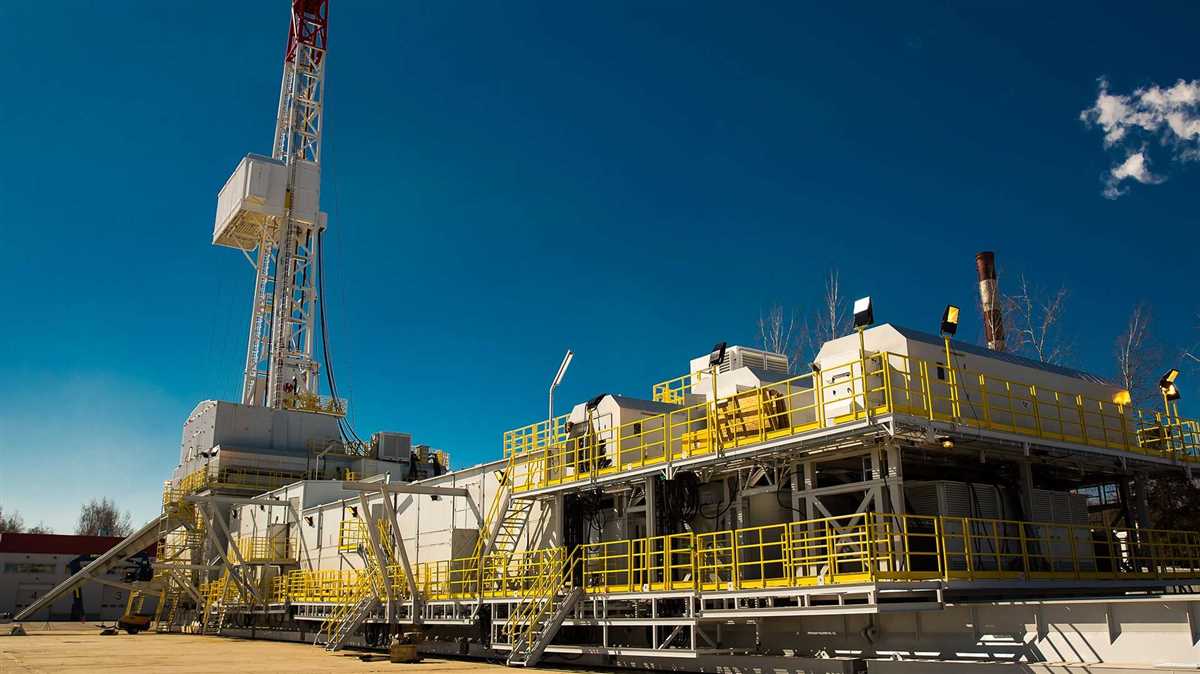
Drilling rig operations are inherently dangerous and involve various risks. To ensure the safety of personnel and prevent accidents, it is essential to implement strict safety measures and adhere to government regulations.
1. Training and Certification
- All rig workers must undergo comprehensive training programs to acquire the necessary skills and knowledge to perform their duties safely.
- Proper certification should be obtained to demonstrate competence in specific tasks and equipment operation.
2. Personal Protective Equipment (PPE)
- All personnel on the drill rig must wear appropriate PPE, including hard hats, safety glasses, gloves, steel-toed boots, and high-visibility clothing.
- Respiratory protection, such as masks or respirators, should be provided when working in areas with potential airborne hazards.
3. Hazard Identification and Risk Assessment
- Prior to starting any drilling activities, a thorough assessment of potential hazards should be conducted.
- All identified risks should be analyzed, and measures should be implemented to eliminate or minimize them.
4. Emergency Response and Evacuation Procedures
- Emergency response plans should be in place, with clear procedures for handling fires, blowouts, well control issues, and other emergencies.
- All personnel should be trained on emergency response protocols, including evacuation procedures and the use of safety equipment.
5. Regular Inspections and Maintenance
- The rig and all equipment should undergo regular inspections to identify any potential safety issues or equipment malfunctions.
- Maintenance and repair activities should be conducted promptly to ensure that all machinery and systems are in good working condition.
6. Regulatory Compliance
- Drilling operations must comply with all relevant government regulations and industry standards, including environmental regulations and worker safety guidelines.
- Regular audits and inspections should be conducted to ensure compliance and address any non-compliance issues promptly.
7. Communication and Job Safety Analysis
- Effective communication among the rig crew is crucial for maintaining safety.
- Job safety analysis should be conducted before commencing any tasks to identify potential hazards and determine appropriate safety measures.
By implementing these safety measures and adhering to regulations, drill rig operators can create a safe working environment and protect their personnel from potential hazards and accidents.
Maintenance and Inspection
Maintenance and inspection are crucial aspects of keeping a drill rig in optimal working condition. Regular maintenance and inspections help identify and address any issues or potential problems that could impact the performance and longevity of the drill rig.
Importance of Maintenance
Maintenance is essential for the proper functioning of a drill rig. It helps ensure that all components and systems are in good working order and ready for operation. Regular maintenance can lower the risk of breakdowns and extend the lifespan of the rig.
Some key maintenance tasks for a drill rig include:
- Lubrication: Regularly lubricating all moving parts and components helps reduce friction and wear, ensuring smooth operation.
- Filter and Fluid Replacement: Replacing filters and fluids at recommended intervals helps maintain proper functioning and prevents contamination.
- Belt Inspection: Checking the condition and tension of belts helps prevent slipping and damage.
- Electrical Connections: Inspecting and tightening electrical connections can prevent issues caused by loose or corroded connections.
- Bolt and Fastener Check: Checking and tightening bolts and fasteners helps prevent loosening and potential failure.
Inspection Procedures
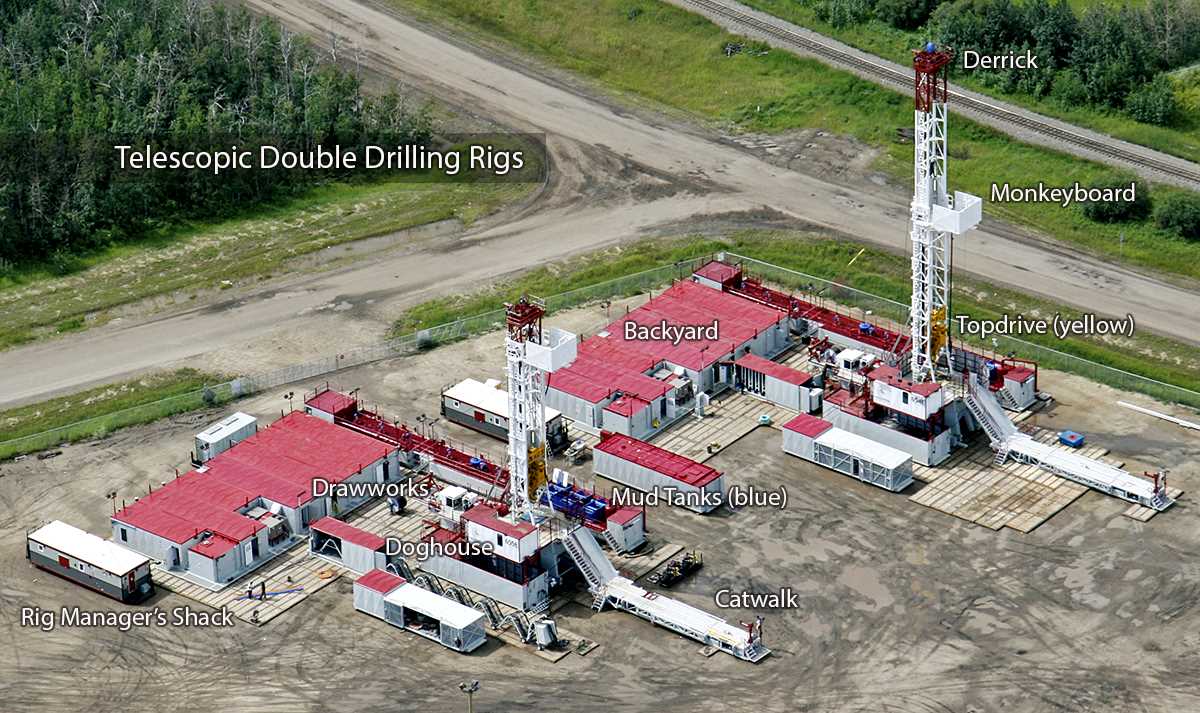
In addition to regular maintenance, conducting thorough inspections is crucial for identifying any emerging issues or signs of wear. Inspections should be performed before and after each use, as well as on a regular basis as part of a preventative maintenance program. Some key inspection procedures include:
- Visual Inspection: Visually inspecting the rig for any signs of damage, leaks, or loose components is an important first step.
- Fluid Checks: Checking fluid levels and condition, such as hydraulic oil or coolant, is essential for proper operation.
- Bearing and Seal Examination: Inspecting bearings and seals for any signs of wear, noise, or leakage is important for preventing breakdowns.
- Electrical System Inspection: Examining the electrical system for any damaged wires, loose connections, or faulty components can help prevent electrical issues.
- Drilling Tools Examination: Checking the condition of drilling tools, such as drill bits and cutters, helps ensure safe and efficient drilling operations.
Record Keeping
It is important to keep detailed records of all maintenance and inspection activities performed on the drill rig. This documentation helps track maintenance schedules, identify recurring issues, and ensure compliance with manufacturer recommendations and industry regulations.
Conclusion
Maintenance and inspection are essential for maintaining a drill rig in optimal working condition. By regularly performing maintenance tasks and carrying out thorough inspections, operators can minimize the risk of breakdowns and extend the lifespan of the rig, ultimately maximizing efficiency and productivity.
Latest Technological Advancements
Automated Systems
One of the most significant advancements in drill rig technology is the incorporation of automated systems. These systems utilize advanced sensors, artificial intelligence, and machine learning algorithms to enhance the drilling process.
Automated systems can analyze data in real-time, adjusting drilling parameters and optimizing performance. This technology eliminates the need for manual adjustments, improving accuracy and efficiency.
Geosteering
Geosteering is another technological advancement that has revolutionized the drilling industry. This technique involves using real-time data from various sources, such as sensors and imaging tools, to steer the drill bit towards the desired target.
Geosteering allows operators to navigate through complex geological formations with precision, reducing drilling time and costs. It also helps to minimize environmental impact by avoiding unnecessary drilling.
Directional Drilling
Directional drilling has become increasingly popular in recent years, thanks to advancements in technology. This technique involves drilling wells at non-vertical angles, allowing access to oil and gas reserves that were previously unreachable.
Directional drilling is achieved through the use of advanced drilling tools and techniques, including rotary steerable systems and measurement while drilling (MWD) systems. These tools provide accurate data on the well’s trajectory, enabling operators to control the drilling direction and optimize resource recovery.
Integrated Data Management
The introduction of integrated data management systems has greatly improved the efficiency and accuracy of drilling operations. These systems collect, analyze, and interpret data from multiple sources, such as sensors, imaging tools, and drilling logs.
By integrating data from various sensors and tools, drilling operators can make informed decisions, optimize performance, and mitigate risks. Integrated data management systems also facilitate collaboration between different stakeholders, improving communication and overall project management.
Drilling Fluid Innovations
Advancements in drilling fluid technology have improved drilling efficiency and environmental sustainability. New types of drilling fluids have been developed to address common challenges, such as high temperatures, high pressures, and complex geological formations.
These drilling fluids are designed to minimize friction, provide lubrication, and maintain stability in various drilling conditions. They also have reduced environmental impact, with some formulations being biodegradable and non-toxic.
Smart Sensors
Smart sensors are now being widely used in drill rigs to monitor and optimize drilling operations. These sensors can measure various parameters, including temperature, pressure, vibration, and torque.
By continuously monitoring these parameters, drill rig operators can detect anomalies, prevent equipment failure, and ensure optimal performance. Smart sensors also facilitate predictive maintenance, reducing downtime and maximizing operational efficiency.
Robotics and Remote Control
The use of robotics and remote control technology has streamlined drilling operations, improved safety, and reduced human intervention. Robotic systems can perform tasks that are dangerous or challenging for humans, such as pipe handling and wellhead operations.
Remote control technology allows operators to control and monitor drill rigs from a centralized location, eliminating the need for personnel to be present on-site. This not only enhances safety but also reduces costs associated with travel and accommodation.
Advanced Drilling Tools
Advancements in drilling tool technology have significantly increased drilling efficiency and accuracy. Tools such as diamond drill bits, underreamers, and mud motors have been developed to improve drilling performance in various conditions.
Diamond drill bits, for example, are extremely durable and can maintain sharpness for longer durations. Underreamers are used to enlarge the wellbore diameter, increasing the production potential. Mud motors provide rotational power to the drill bit, enhancing drilling speed and performance.
Data Analytics and Predictive Modeling
Data analytics and predictive modeling have become crucial components of the drilling industry. By analyzing historical and real-time data, operators can identify patterns, optimize drilling parameters, and make informed decisions.
Predictive modeling algorithms are used to forecast drilling performance, resource recovery, and potential risks. These models consider various factors, such as geology, drilling parameters, and reservoir characteristics, to provide accurate predictions.
FAQ:
What is a drill rig?
A drill rig is a machine that is used for drilling holes in the ground. It is commonly used in construction, mining, and oil and gas exploration.
How does a drill rig work?
A drill rig works by using a rotating drill bit to create a hole in the ground. The drill bit is attached to a drill string, which is then rotated by a motor. As the drill bit rotates, it cuts through the ground, allowing the drill rig to create a hole.
How much does a drill rig cost?
The cost of a drill rig can vary depending on several factors, such as the type of rig, the size and capacity of the rig, and the features and capabilities of the rig. On average, a drill rig can cost anywhere from thousands to millions of dollars.
Video:










